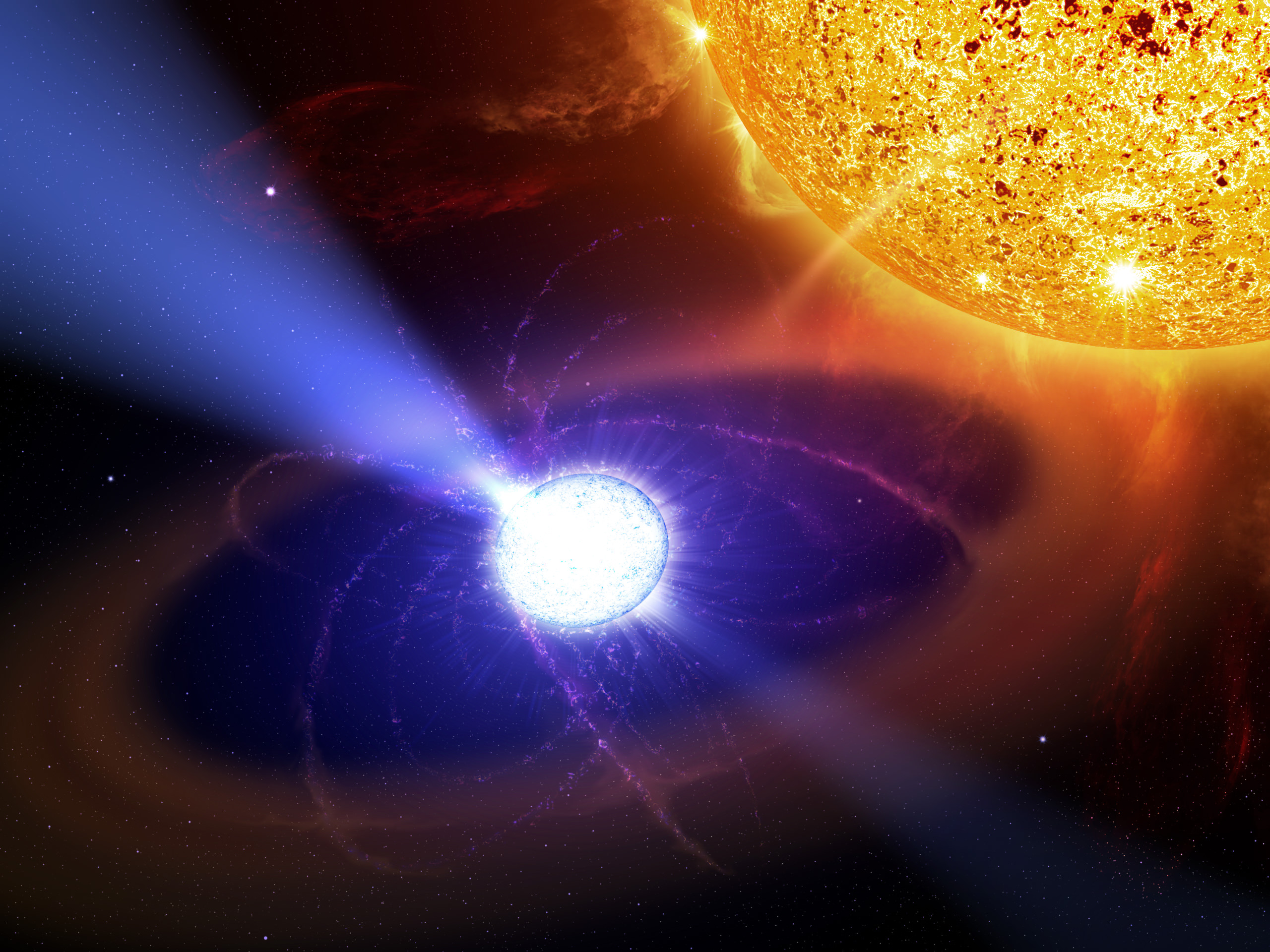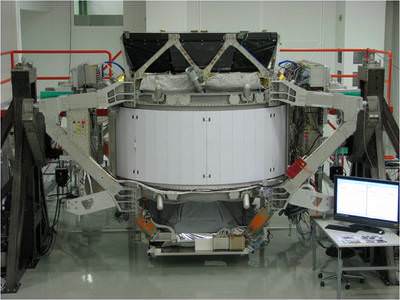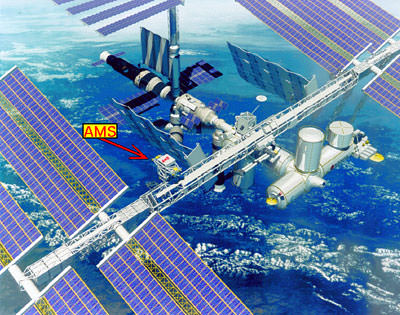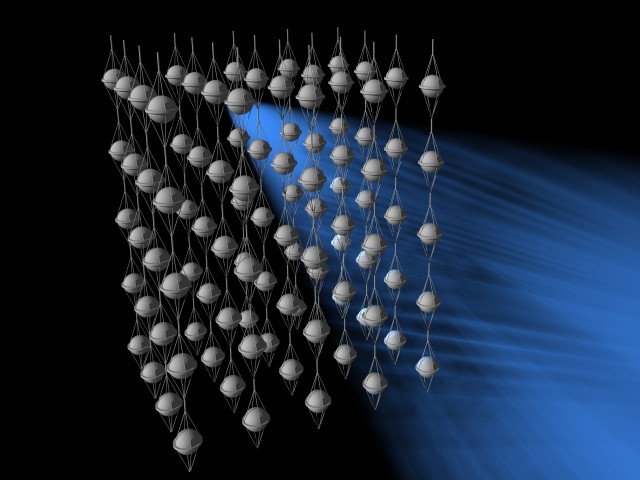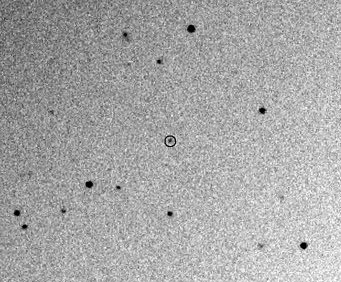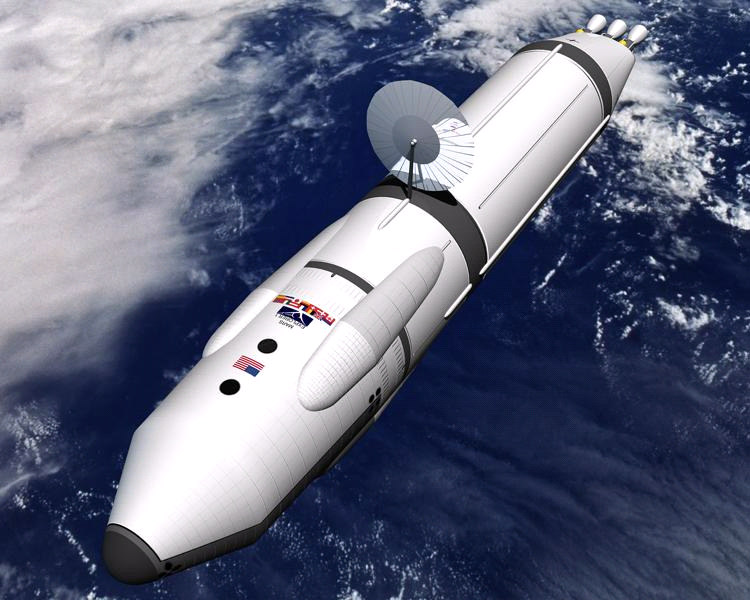If you’re looking to build a powerful spaceship, nothing’s better than antimatter. It’s lightweight, extremely powerful and could generate tremendous velocity. However, it’s enormously expensive to create, volatile, and releases torrents of destructive gamma rays. NASA’s Institute for Advanced Concepts is funding a team of researchers to try and design an antimatter-powered spacecraft that could avoid some of those problems.
Most self-respecting starships in science fiction stories use anti matter as fuel for a good reason – it’s the most potent fuel known. While tons of chemical fuel are needed to propel a human mission to Mars, just tens of milligrams of antimatter will do (a milligram is about one-thousandth the weight of a piece of the original M&M candy).
However, in reality this power comes with a price. Some antimatter reactions produce blasts of high energy gamma rays. Gamma rays are like X-rays on steroids. They penetrate matter and break apart molecules in cells, so they are not healthy to be around. High-energy gamma rays can also make the engines radioactive by fragmenting atoms of the engine material.
The NASA Institute for Advanced Concepts (NIAC) is funding a team of researchers working on a new design for an antimatter-powered spaceship that avoids this nasty side effect by producing gamma rays with much lower energy.
Antimatter is sometimes called the mirror image of normal matter because while it looks just like ordinary matter, some properties are reversed. For example, normal electrons, the familiar particles that carry electric current in everything from cell phones to plasma TVs, have a negative electric charge. Anti-electrons have a positive charge, so scientists dubbed them “positrons”.
When antimatter meets matter, both annihilate in a flash of energy. This complete conversion to energy is what makes antimatter so powerful. Even the nuclear reactions that power atomic bombs come in a distant second, with only about three percent of their mass converted to energy.
Previous antimatter-powered spaceship designs employed antiprotons, which produce high-energy gamma rays when they annihilate. The new design will use positrons, which make gamma rays with about 400 times less energy.
The NIAC research is a preliminary study to see if the idea is feasible. If it looks promising, and funds are available to successfully develop the technology, a positron-powered spaceship would have a couple advantages over the existing plans for a human mission to Mars, called the Mars Reference Mission.
“The most significant advantage is more safety,” said Dr. Gerald Smith of Positronics Research, LLC, in Santa Fe, New Mexico. The current Reference Mission calls for a nuclear reactor to propel the spaceship to Mars. This is desirable because nuclear propulsion reduces travel time to Mars, increasing safety for the crew by reducing their exposure to cosmic rays. Also, a chemically-powered spacecraft weighs much more and costs a lot more to launch. The reactor also provides ample power for the three-year mission. But nuclear reactors are complex, so more things could potentially go wrong during the mission. “However, the positron reactor offers the same advantages but is relatively simple,” said Smith, lead researcher for the NIAC study.
Also, nuclear reactors are radioactive even after their fuel is used up. After the ship arrives at Mars, Reference Mission plans are to direct the reactor into an orbit that will not encounter Earth for at least a million years, when the residual radiation will be reduced to safe levels. However, there is no leftover radiation in a positron reactor after the fuel is used up, so there is no safety concern if the spent positron reactor should accidentally re-enter Earth’s atmosphere, according to the team.
It will be safer to launch as well. If a rocket carrying a nuclear reactor explodes, it could release radioactive particles into the atmosphere. “Our positron spacecraft would release a flash of gamma-rays if it exploded, but the gamma rays would be gone in an instant. There would be no radioactive particles to drift on the wind. The flash would also be confined to a relatively small area. The danger zone would be about a kilometer (about a half-mile) around the spacecraft. An ordinary large chemically-powered rocket has a danger zone of about the same size, due to the big fireball that would result from its explosion,” said Smith.
Another significant advantage is speed. The Reference Mission spacecraft would take astronauts to Mars in about 180 days. “Our advanced designs, like the gas core and the ablative engine concepts, could take astronauts to Mars in half that time, and perhaps even in as little as 45 days,” said Kirby Meyer, an engineer with Positronics Research on the study.
Advanced engines do this by running hot, which increases their efficiency or “specific impulse” (Isp). Isp is the “miles per gallon” of rocketry: the higher the Isp, the faster you can go before you use up your fuel supply. The best chemical rockets, like NASA’s Space Shuttle main engine, max out at around 450 seconds, which means a pound of fuel will produce a pound of thrust for 450 seconds. A nuclear or positron reactor can make over 900 seconds. The ablative engine, which slowly vaporizes itself to produce thrust, could go as high as 5,000 seconds.
One technical challenge to making a positron spacecraft a reality is the cost to produce the positrons. Because of its spectacular effect on normal matter, there is not a lot of antimatter sitting around. In space, it is created in collisions of high-speed particles called cosmic rays. On Earth, it has to be created in particle accelerators, immense machines that smash atoms together. The machines are normally used to discover how the universe works on a deep, fundamental level, but they can be harnessed as antimatter factories.
“A rough estimate to produce the 10 milligrams of positrons needed for a human Mars mission is about 250 million dollars using technology that is currently under development,” said Smith. This cost might seem high, but it has to be considered against the extra cost to launch a heavier chemical rocket (current launch costs are about $10,000 per pound) or the cost to fuel and make safe a nuclear reactor. “Based on the experience with nuclear technology, it seems reasonable to expect positron production cost to go down with more research,” added Smith.
Another challenge is storing enough positrons in a small space. Because they annihilate normal matter, you can’t just stuff them in a bottle. Instead, they have to be contained with electric and magnetic fields. “We feel confident that with a dedicated research and development program, these challenges can be overcome,” said Smith.
If this is so, perhaps the first humans to reach Mars will arrive in spaceships powered by the same source that fired starships across the universes of our science fiction dreams.
Original Source: NASA News Release


